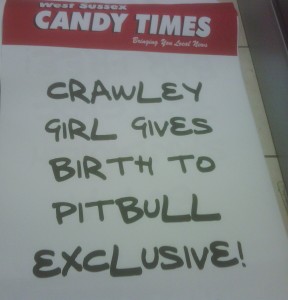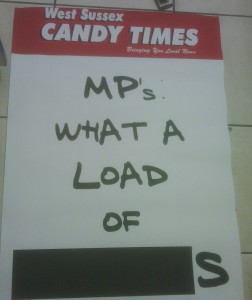ITV management had better hope Ben Bradshaw’s deeds are as good as his words, because its faith in an another revenue-generating scheme looks misplaced.
Bradshaw, the recently appointed Culture Secretary, told the Financial Times earlier this week that the BBC’s refusal to relinquish licence fee money to aid other broadcasters with a public service remit was ‘wrong-headed’. He said the corporation’s hierarchy would have to come to its senses sooner or later.
While the BBC fights the good fight against ‘ideological’ forces such as these, part of the network gave airtime to a would-be recipient of top-slicing: ITV’s executive chairman, Michael Grade.
On BBC Five Live last Thursday, Simon Mayo asked Grade about the YouTube Susan Boyle affair (some 200 million video views to date).
After describing YouTube’s proposed revenue-share for the Boyle clips as ‘derisory’, Grade insisted ITV wouldn’t get caught out again:
“We are working on it and watch this space, but we’re all going to crack it, either when the advertising market recovers or a combination of advertising and micropayments which is 50p a time or 25p a time to watch it.
“We may move in time, in the medium term, to micropayments, the same way you pay for stuff on your mobile phone. I think we can make that work extremely well.”
(You can listen to the interview on the iPlayer until midnight Wednesday 15 July. Grade interviews starts around 1 hour, 22 minutes.)
Despite Grade’s confidence there are grave doubts that paying per clip is going to work. Here are four reasons to worry:
1. Micropayments don’t work for perishable goods
It’s an argument that has been made against charging for news stories, but it is equally applicable when you are talking about clips from a reality TV programme.
Quality drama may have a shelf-life and an audience willing to pay for it, but a water cooler moment from reality TV? Not likely.
The Susan Boyle phenomenon still feels vaguely current, but it is a passing fad.
If you’re unconvinced take this quick, highly unscientific test: would you pay 50p to watch the machinations of ‘Nasty’ Nick Bateman from the first series of Big Brother?
The correct answer: who’s ‘Nasty’ Nick Bateman?
2. Micropayments put people off
Writing back in 1996, social scientist Nick Szabo introduced the idea of mental transaction costs. He argued that no matter how small the payment, it still incurs effort on behalf of the potential buyer to work out if he or she is getting a good deal.
He wrote:
“The reason we don’t do the things is that they’re not worth the brain cycles: we have reached the mental accounting barrier.”
And that in a nutshell is why micropayments are doomed to failure.
It’s a theme Chris Anderson touched on in his recently released book ‘Free: The Future of a Radical Price‘. He wrote:
“It’s the worst of both worlds – the mental tax of a larger price without the commensurate cash. (Szabo was right: Micropayments have largerly failed to take off.)”
Unsurprisingly, Anderson advocates free as a preferable alternative to micro, but he’s not alone. New York professor Clay Shirky is with him.
In fact Shirky has been saying much the same thing since the beginning of the decade and his 2003 essay ‘Fame vs Fortune: Micropayments and Free Content‘ has become something of a set text.
3. Micropayments only work if you control distribution
ITV’s Grade rightly cites mobile phones as a great platform for micropayments.
The network operator controls what is available via the handset, limiting availability and ensuring prices won’t be undercut.
Further, the operator offers a simple and largely pain-free way of paying for goods by adding the cost to a monthly bill or subtracting it from a top-up on a pay-as-you-go phone.
But the web is different – it’s anarchic, open, a free-for-all.
Nobody controls distribution and despite efforts to chase down copyright abusers, there will always be someone ready to undercut your micropayment with an even smaller charge – free.
Opponents of this reading cite Apple’s iTunes Music Store as proof that micropayments can work on the net. But, as Shirky argued earlier this year, the fee-per-track model works because this is a rare example where no alternative exists.
“Everything from Napster to online radio has been crippled or killed by fiat; small payments survive in the absence of a market for other legal options.”
Further, Apple does control part of the distribution, successfully creating a market for the must-have iPod.
So despite Grade’s assertion, it’s unlikely any micropayment system on the internet will turn out ‘the same way you pay for stuff on mobile phones’.
Incidentally, it will be worth watching to see how the smartphone redefines this divide between the largely ordered phone network and the web.
4. YouTube clips drive traffic first, revenues second
If you think about a clip on YouTube as a direct money maker, you’ve got your priorities wrong.
It’s about reach, exposure and promotion. It’s about creating a buzz and driving traffic back to the core.
Did the Susan Boyle clip achieve this? No question.
For starters, video views at ITV.com were up 528 per cent year-on-year and advertising slots for the duration of the ‘Britain’s Got Talent’ season sold out.
Meanwhile, such was the interest around the show, the final was seen by 19.2 million people – ITV’s highest audience since England vs. Sweden in the 2006 World Cup. More eyeballs this year promises high advertising yields next.
In short YouTube kept its part of the bargain.
Would all that have happened had ITV charged 25p a clip? Would 200 million people have checked it out? Will a pay-per-clip Britain’s Got Talent be a winner?
The twist in the tale is that Grade, who steps down as executive chairman at the end of the year, won’t be around to find out.
Jon Bernstein is former multimedia editor of Channel 4 News. This is part of a series of regular columns for Journalism.co.uk. You can read his personal blog at this link.


